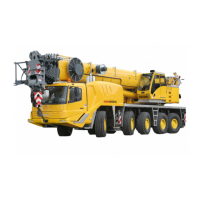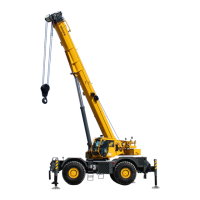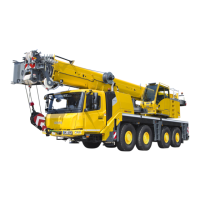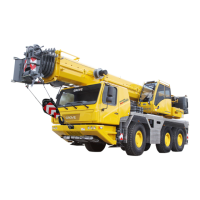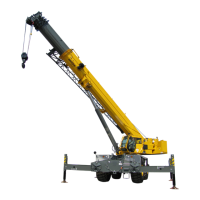GROVE Published 10-21-2010, Control# 198-04 4-37
5540F/YB5515 SERVICE MANUAL HYDRAULIC SYSTEM
Load Holding Valves
The outrigger cylinders have load holding valves installed in
the cylinder base. The purpose of these valves is to inhibit
the cylinder from retracting if a hydraulic line or hose breaks.
The load-holding valve will hold the oil in the base of the
cylinder until there is oil from the pump available to the rod
side of the cylinder.
Oil flows freely through the load-holding valve and into the
cylinder base when the cylinder is being extended. To retract
the cylinder, oil is sent to the rod port of the cylinder. As the
cylinder starts to retract, the piston meets resistance of the
oil held in the cylinder base by the load-holding valve.
Pressure increases as the pump tries to overcome the
resistance.
When the pressure on the oil from the pump is high enough
to overcome the spring in the load-hold valve plus the
pressure of the oil in the cylinder base, the load-hold valve
opens and the cylinder retracts.
If the cylinder starts to retract too rapidly, for example,
because of a heavy load on the cylinder, pilot pressure from
the rod side decreases and the load holding valve closes.
The cylinder stops retracting temporarily until enough oil is
again available to the rod side of the cylinder. In this way,
cylinder cavitation is prevented and the load is held.
NOTE: The engine must be running to retract the outrigger
cylinders. The load-holding valves inhibit retracting
the outriggers jacks simply from the weight of the
machine.
Outrigger Cylinder Leakage Check
If one of the outrigger cylinders will not hold under load, the
problem is either the holding valve or the cylinder piston
packings. To check for internal leakage in the cylinder:
1. Start the engine and engage the parking brake.
2. Fully lower the outrigger.
3. Shut off the engine.
4. Remove the hydraulic line from the rod port of the
vertical cylinder being checked.
5. Start the engine and actuate the control switch in the
direction to lower the outrigger. Check the amount of
leakage from the open port. If the leakage is more than a
couple of drops per minute, replacement of the piston
seals is recommended.
AXLE LOCKOUT CIRCUIT
General
The axle lockout hydraulic system (Figure 4-40) includes the
accumulator charging valve, the axle lockout solenoid valve,
two axle lockout hydraulic cylinders, an the hydraulic lines.
Oil Flow
Oil flow from the accumulator charge valve flows to the axle
lockout solenoid valve. With the axle lockout disengaged
solenoid energized, the solenoid spool is shifted to allow oil
to flow from the barrel end of one cylinder to the rod end of
the other as one side of the axle is forced up by traveling
over uneven terrain. The system is not pressurized and oil is
moved from one cylinder to the other as the action of the axle
moving the cylinders. When the axle lockout engaged
solenoid is energized, the solenoid spool shifts to block oil
movement from one cylinder to the other providing a
hydraulic lock holding the axle rigid.
Reference Only
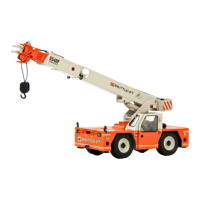
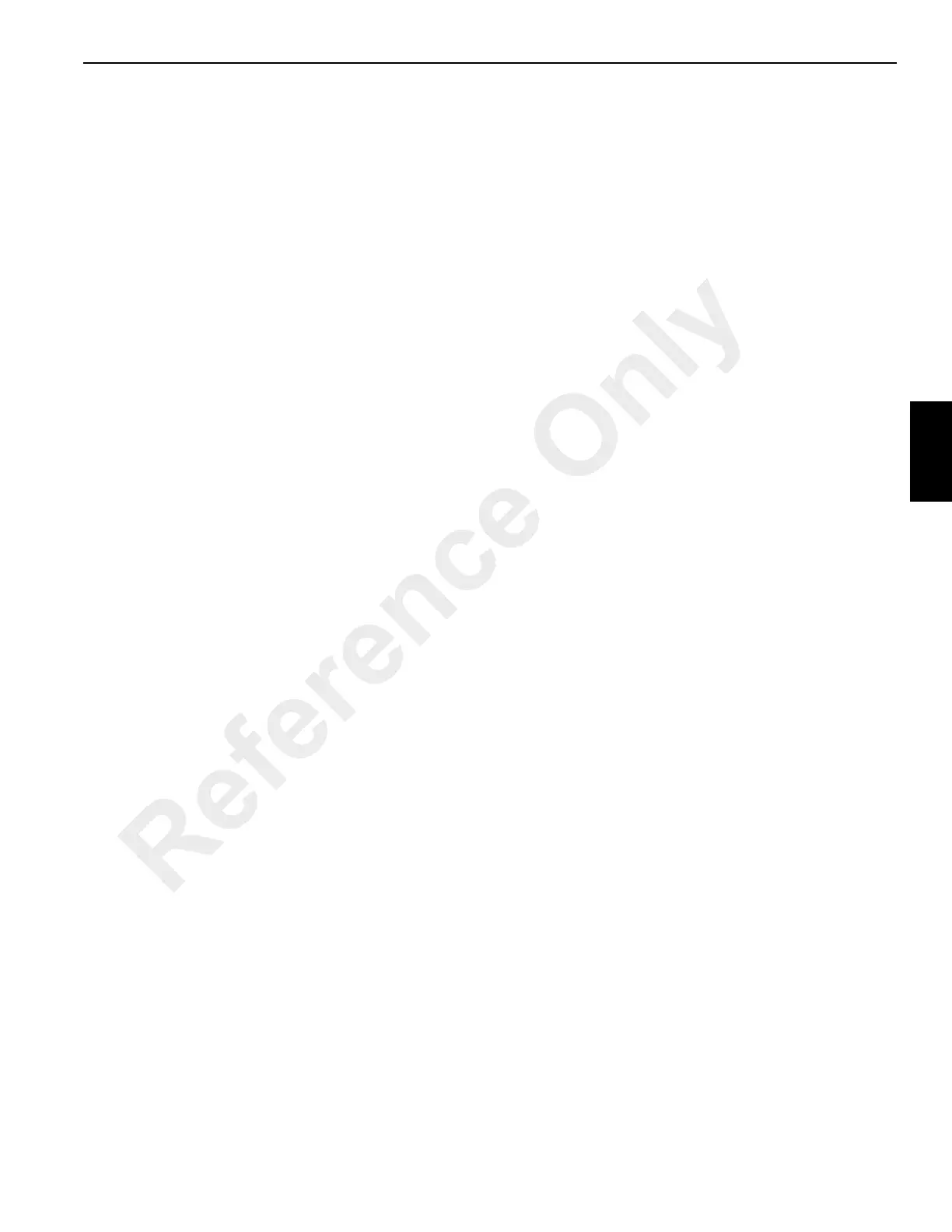